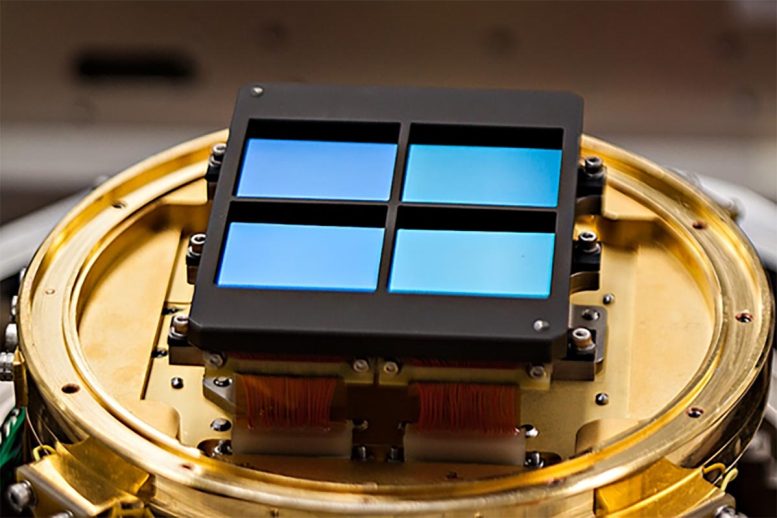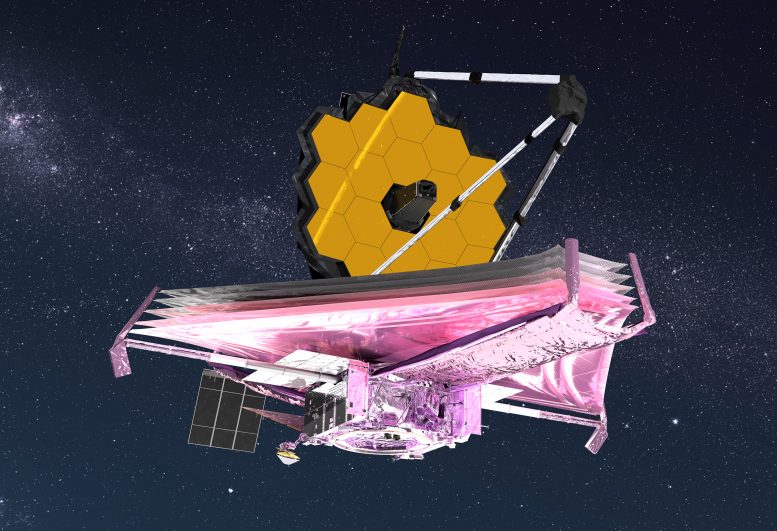NASA’s James Webb Space Telescope. Credit: NASA Goddard Space Flight Center and Northrup Grumman
Now begins the process of aligning all 18 mirror segments so that they work together as one.
Since the arrival of
The James Webb Space Telescope has reached it’s parking spot in space and has successfully powered up all of it’s instruments. Within the week, the UArizona-led NIRCam will be used to align the 18 gold-plated mirror segments to work together as one giant mirror.. Credit: NASA GSFC/CIL/Adriana Manrique Gutierrez
Marcia Rieke, a University of Arizona Regents Professor of Astronomy, is principal investigator for NIRCam. Her husband, George Rieke, also a Regents Professor of Astronomy, is the science team lead for MIRI.
While MIRI and some components of the telescope’s other instruments were powered on in the weeks after Webb’s December 25 launch, the final three instruments – including NIRCam – turned on in the past few days.
After the powered-on instruments undergo initial checks, the mission operations team’s next major step is to turn off instrument heaters. The heaters keep critical optics warm to protect them from water and ice condensation. As the instruments meet predefined criteria for overall temperatures, the team will shut off the heaters to allow the instruments to cool to final temperatures that will allow the infrared detectors to see faint objects in the night sky.

A sensor array for the NIRCam instrument, designed and tested by Marcia Rieke’s research group at Steward Observatory. For the sensors to detect infrared light without too much noise in the data, Webb and its instruments must be kept as cool as possible. Credit: Marcia Rieke
When NIRCam reaches about minus 244 degrees
